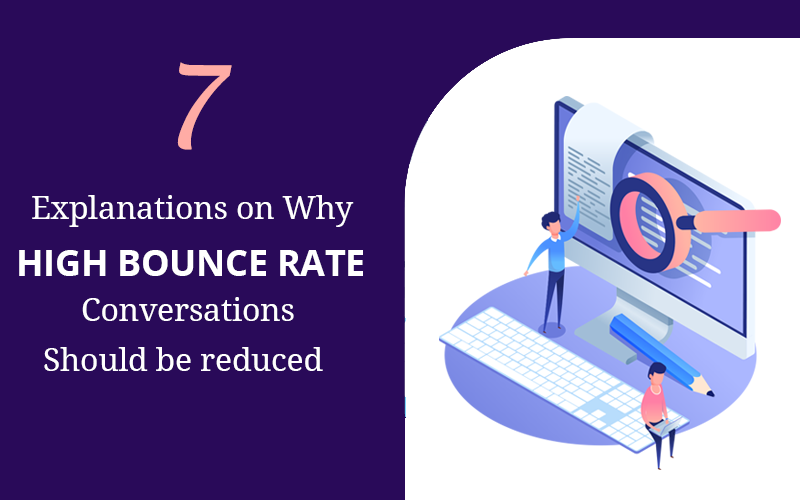When you’re working hard to ameliorate your site’s search performance, one of the things you should focus on is lowering your bounce rate. In other words, high bounce rate conversions are a sign that something is wrong with your strategy – either you aren’t attracting the right site visitors or the visitors who do come don’t have a good user experience.
Bounce Rate Conversions
Here are seven tried-and-true methods for lowering your blog’s bounce rate conversions:
Improve Your Content’s Readability
Key Tips to Help You Format Your Content and Make It More Readable:
- Use subheadings to shed more light on your subject.
- Use bullet points to explain benefits or important points.
- Include as many charts, images, screenshots, and quotes from industry experts as possible.
- Bold keywords a few times but not too many.
- Include a lot of questions in your content to invite readers to participate rather than just read.
- Conclude your content with a subheading that says “conclusion.” This instructs the reader to read the last few words quickly and take action. Make your final point actionable.
Best to Avoid Popups
Consider limiting or eliminating popups if you want to build a long-term site that attracts a large number of organic visitors. Or, at the very least, make them as inconspicuous and unobtrusive as possible.
Go For Compelling Call-to-Action
When it comes to optimizing the CTA, every detail counts. Even seemingly minor changes, such as changing the text on a button, can have a significant impact. It can, for example, engage users and direct them to a resource page on your site, lowering the bounce rate.
Ameliorate Your Brand Storytelling
You must understand how people read the content. They’re mostly scanning the page for anything that stands out. It could be a subheading, a word, a phrase, or a picture. Storytelling can help you connect those attention-grabbing elements to the rest of your content.
Good to Keep Your Blog Fresh with the Right Content
Actively keeping your blog up to date and with relevant content will always yield the best ROI. You’re gradually building momentum and trust by consistently adding new content. Keep in mind that readers are astute and can see through deceptive and manipulative tactics. They will, however, remember every action step you take as well as the words you use. If visitors stay, read, and explore other areas of your website, there is a good chance you have earned their trust and they will return.
You Can Write Attractive Meta Descriptions for Search Users
Meta descriptions are HTML attributes that describe the content of a specific web page. Meta descriptions are used by search engines to display a snippet of your web page so that users can determine whether a particular search result is right for them simply by reading the description. Because a Meta description is primarily aimed at search users, ensure that the keyword they’re looking for is included in your description.
Develop Multiple Landing Pages for High-Volume Keywords – Bounce Rate Conversions
The exit page is one of the metrics that Google Analytics examines. If you look at your dashboard, you’ll notice that the majority of people leave your site from the homepage. A high bounce rate is frequently associated with the rate at which users exit your site’s homepage.
To address this issue, create more landing pages based on the high-value keywords that people in your niche are searching for. I previously demonstrated how to identify valuable keywords that will increase blog engagement and provide a positive user experience. Once you’ve added more landing pages, make sure they’re easy to navigate and then link to them all from your homepage.
Try to Speed up Your Page Load Time
The longer it takes for user landing pages to load, the higher your bounce rate. Furthermore, Google is concerned about site speed – if your site is consistently slow to load, it will drop in rankings, resulting in a higher bounce rate. As a result, reducing the time it takes for your page to load is critical.











